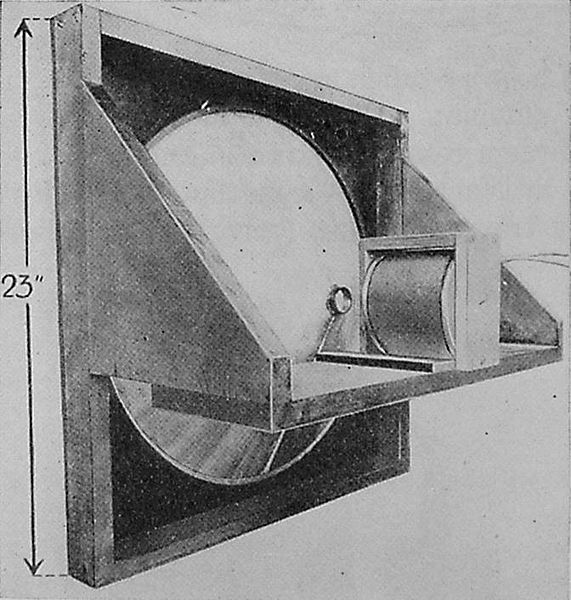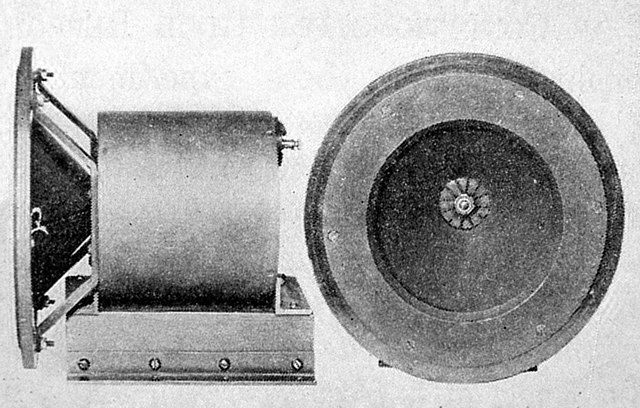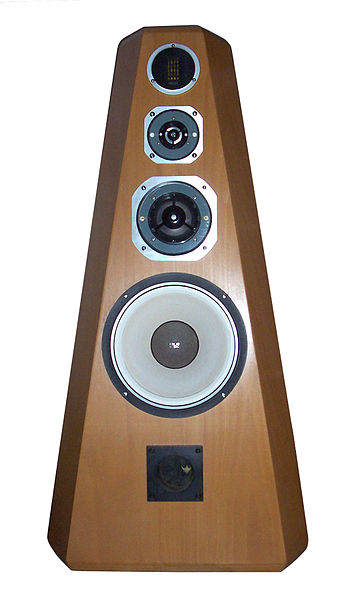A subwoofer is a loudspeaker designed to reproduce low-pitched audio frequencies, known as bass and sub-bass, that are lower in frequency than those which can be (optimally) generated by a woofer. The typical frequency range that is covered by a subwoofer is about 20–200 Hz for consumer products, below 100 Hz for professional live sound, and below 80 Hz in THX-certified systems. Thus, one or more subwoofers are important for high-quality sound reproduction as they are responsible for the lowest two to three octaves of the ten octaves that are audible. This very low-frequency (VLF) range reproduces the natural fundamental tones of the bass drum, electric bass, double bass, grand piano, contrabassoon, tuba, in addition to thunder, gunshots, explosions, etc.

12-inch (30 cm) subwoofer driver (loudspeaker). A driver is commonly installed in an enclosure (often a wooden cabinet) to prevent the sound waves coming off the back of the driver diaphragm from canceling out the sound waves being generated from the front of the subwoofer.
A typical Hi-Fi subwoofer (r.), with the subwoofer loudspeaker built into a cabinet. On the left, a version with transparent cabinet is shown where the large magnet (grayish color) of the speaker driver can be seen in the middle, close to the brown damper.
View of the underside of the downward-firing Infinity Servo Statik 1, showing the size of the 18-inch (45 cm) custom-wound Cerwin-Vega driver in relation to a soda can for scale
A display of Cerwin-Vega speaker enclosures at the 1975 Audio Engineering Society meeting
A loudspeaker is an electroacoustic transducer that converts an electrical audio signal into a corresponding sound. A speaker system, also often simply referred to as a speaker or loudspeaker, comprises one or more such speaker drivers, an enclosure, and electrical connections possibly including a crossover network. The speaker driver can be viewed as a linear motor attached to a diaphragm which couples that motor's movement to motion of air, that is, sound. An audio signal, typically from a microphone, recording, or radio broadcast, is amplified electronically to a power level capable of driving that motor in order to reproduce the sound corresponding to the original unamplified electronic signal. This is thus the opposite function to the microphone; indeed the dynamic speaker driver, by far the most common type, is a linear motor in the same basic configuration as the dynamic microphone which uses such a motor in reverse, as a generator.

Kellogg and Rice in 1925 holding the large driver of the first moving-coil cone loudspeaker
Prototype moving-coil cone loudspeaker by Kellogg and Rice in 1925, with electromagnet pulled back, showing voice coil attached to cone
The first commercial version of the speaker, sold with the RCA Radiola receiver, had only a 6-inch cone. In 1926 it sold for $250, equivalent to about $3000 today.
A four-way, high fidelity loudspeaker system. Each of the four drivers outputs a different frequency range; the fifth aperture at the bottom is a bass reflex port.








